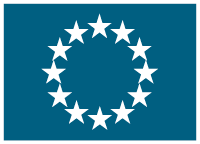Full Recovery End-of-Life Photovoltaic
(LIFE FRELP)
Start date: Jul 1, 2013,
End date: Apr 30, 2016
PROJECT
FINISHED
Background
The stock of photovoltaic (PV) panels has been rising sharply in recent years and is currently estimated at some three million tonnes in the EU. However, sustainable solutions for the recovery of PV waste are still not well developed, and if not disposed of correctly, this waste can cause both environmental and human health problems. It is forecast, for example, that from 2015 onwards, 30 000 t/year will be disposed in Europe, and over the next 20 years this amount could reach 500 000 t/year, including: c. 390 000 t/year of glass; 55 000 t/year of aluminum; 35 000 t/year of plastics; and 11 500 t/year of crystalline silicon cells.
Since 2012, PV has been included in the EU WEEE Directive, which requires manufacturers and importers to facilitate and finance the take-back and recycling of their discarded end-of-life products. Current technologies recycle glass in low-value industries, such as glass fibre and insulation. They do not allow for recovery of metals, especially crystalline silicon, which is used in more than 90% of PV cells worldwide. Silicon production implies energy costs that are equivalent to three years of PV energy production, which represents a serious drawback in terms of its environmental performance from a life-cycle approach.
Objectives
The LIFE FRELP project aims to test and develop innovative technologies for 100% recycling of end-of-life PV panels in an economically viable way. Two main environmental solutions are proposed:
The recovery of high quality extra clear glass, to be used in the hollow and flat glass industry, thus implying very significant energy and CO2 emission savings in the glass melting process;
The recovery of (metallic) silicon, to be used as ferrosilicon in iron silicon alloys or, if pure enough, transformed into amorphous silicon for the production of thin films, thus greatly reducing energy consumption and CO2 emissions associated with the production of primary silicon.
Expected results:
The expected results, demonstrated at a pilot plant treating 3 500 t of PV panels over the project lifetime, are:
Full recovery of aluminum and connectors for recycling in suitable industries;
Development of a new technology for the improvement of EVA (Ethylene-vinyl acetate) detachment from glass, preserving glass purity for integral recycling in valuable flat and hollow glass;
Recovery of energy from EVA sandwich, maintaining the ability of crystalline silicon and metals to be processed;
Development of a new acid leaching technology for the full recovery of (metallic) silicon, to be used as iron silicon alloys or amorphous silicon for the production of thin films;
Full recovery of metals through micro- and nano- filtering of eluate, to be used for recycling in suitable industries;
Recovery from 3 500 t PV panels of 2 800 t of glass, 350 t aluminum, 35 t connectors, 90 t fuel, 70 t gas, 157.5 t gasoil, 24 t of pure silicon, 3.15 t metals, and 0.35 t organic waste; and
A considerable reduction in energy consumption and CO2 emissions due to: the use of glass cullet in the glass melting furnace; the substitution of virgin silicon with recycled silicon; and the production of energy by EVA cracking.
Get Access to the 1st Network for European Cooperation
Log In
or
Create an account
to see this content
Coordinator
- Lodovico RAMON
- (Italy)
